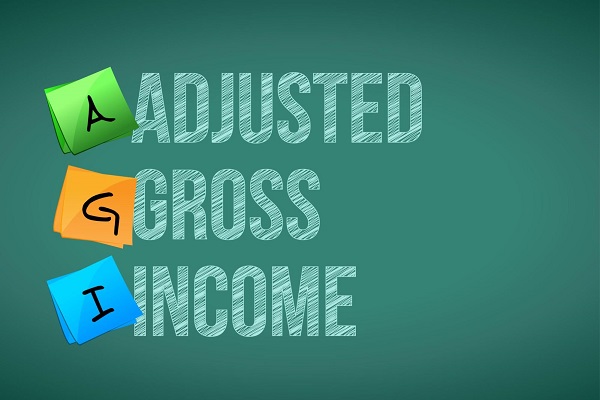
As we approach 2025, Social Security benefits remain an essential financial pillar for millions of retirees. But understanding how these benefits will be taxed can be a bit tricky. Will changes to tax rules in 2025 reduce your tax burden, or will they leave you with more to pay? This guide is here to help you navigate the updates, calculate your taxes, and make the most of the deductions and exemptions available to you. Whether you’re planning for retirement or already enjoying it, knowing how taxes on Social Security work is crucial.
Social Security Benefits Tax in 2025
| Key Information | Details |
|---|---|
| Social Security Tax Rate | 6.2% for wages up to $176,100 in 2025 |
| Medicare Tax Rate | 1.45%, with an additional 0.9% for high earners |
| New Senior Deduction | $6,000 deduction for individuals 65+; $12,000 for married couples |
| Maximum Earnings for Social Security Tax | $176,100 (earnings above this are not taxed for Social Security) |
| Taxable Social Security Benefits | 90% of beneficiaries will not pay federal tax due to new deductions |
| Phase-Out Limits | Deductions phased out for AGI over $75,000 (individual), $150,000 (couple) |
| Expiration of Senior Deduction | December 31, 2028 |
| Action Needed | Adjust your tax filings and consider electronic payments for SSA benefits |
With the new updates in 2025, Social Security tax rules will undergo significant changes that could make a meaningful difference in the amount of tax retirees pay on their benefits. The $6,000 senior deduction, coupled with changes in taxable earnings limits, will likely benefit many seniors by lowering their tax liabilities.
But the key to saving money lies in understanding these changes, adjusting your income strategy, and planning ahead. If you’re nearing retirement, now is the time to familiarize yourself with these rules. Stay proactive in planning, consult with a tax professional, and take advantage of these benefits to ensure a smooth, financially secure retirement.
What is Social Security?
Social Security is a vital social insurance program in the United States, established by the Social Security Act of 1935. It provides retirement, disability, and survivor benefits to millions of Americans. It’s primarily funded through dedicated payroll taxes paid by workers and their employers, with the aim of providing a safety net and financial security for eligible individuals and their families.

A Look Back at Taxation
Prior to 1984, Social Security benefits were generally exempt from federal income taxes. This changed with the 1983 Social Security Amendments, which introduced taxation on a portion of benefits for certain income levels to help shore up the program’s finances. Then, in 1993, Congress further adjusted the rules, increasing the maximum taxable portion to 85% for higher earners. This evolution reflects ongoing efforts to ensure the long-term solvency of the Social Security program.
The Big Picture: Why Does Social Security Tax Matter?
Social Security benefits are designed to provide a safety net for retirees. However, the taxability of these benefits depends largely on your combined income, which includes not just your Social Security benefits, but also any other income you may have. This can sometimes lead to confusion for retirees trying to figure out how much they actually get to keep.
If you’re someone who depends on your Social Security benefits as a major source of income, it’s crucial to understand how much of those benefits are taxable. With the right knowledge and planning, you can avoid unnecessary taxes and optimize your retirement income.
In 2025, there are updates that could significantly impact how much tax you’ll pay on your Social Security benefits, potentially saving you thousands of dollars.
How Much of Your Social Security Benefits Are Taxed?
Let’s break it down simply. Social Security benefits are taxable based on your combined income—the sum of your adjusted gross income (AGI) from all sources, including:
- Your Social Security benefits.
- Other income, such as pensions, retirement account distributions, dividends, or even part-time work.
- Non-taxable interest (like from municipal bonds).

Here’s a quick look at the income thresholds that determine how much of your Social Security benefits are taxable:
- Single filers:
- If combined income is between $25,000 to $34,000, up to 50% of your Social Security benefits are taxable.
- If combined income exceeds $34,000, up to 85% of your Social Security benefits may be taxed.
- Married couples filing jointly:
- If combined income is between $32,000 and $44,000, up to 50% of your Social Security benefits are taxable.
- If combined income exceeds $44,000, up to 85% of your Social Security benefits may be taxable.
2025 Updates: New Tax Breaks for Social Security Recipients
1. Senior Deduction: A Major Win for Retirees
For retirees 65 and older, the new $6,000 deduction is a game-changer. This deduction lowers your taxable income, meaning you’re less likely to owe taxes on your Social Security benefits. For married couples, this deduction doubles to $12,000.
Case Study:
Let’s look at a hypothetical scenario to see how this works. Imagine John, a 67-year-old retiree, who receives $18,000 annually from Social Security and has $20,000 in other retirement income. Without any deductions, his combined income would be $38,000. However, by applying the $6,000 senior deduction, his taxable income drops to $32,000, potentially keeping him under the tax threshold.
However, the deduction phases out for high earners. Once your adjusted gross income (AGI) exceeds $75,000 for individuals or $150,000 for married couples, the deduction begins to disappear, and once you hit $175,000 (individuals) or $250,000 (couples), it’s gone entirely.
2. Social Security Taxable Earnings Limit
The amount of income that’s subject to Social Security tax in 2025 will increase to $176,100. So, if you make more than that, you won’t pay the 6.2% Social Security tax on income above this amount. However, keep in mind that the Medicare tax still applies to all income, and high earners may face an additional 0.9% Medicare tax on income above $200,000 for individuals or $250,000 for couples.
How to Maximize Your Benefits: Tips for Retirees
1. Understand Your Combined Income
It’s essential to have a good grasp of your combined income to determine how much of your Social Security benefits will be taxable. You can estimate your taxable benefits by calculating your total income and applying the appropriate thresholds. For example, if your combined income is below $25,000 as a single filer, you may pay no tax at all on your Social Security benefits.
2. Plan for the Senior Deduction
Ensure you’re taking full advantage of the $6,000 deduction (or $12,000 for couples). If your income is near the phase-out limits, you may want to consider strategies, such as shifting income sources or delaying withdrawals from retirement accounts.
3. Adjust Your Retirement Withdrawals
If you’re drawing income from retirement accounts like 401(k)s or IRAs, consider adjusting the timing of your withdrawals to minimize the impact on your Social Security taxability. By doing this, you might be able to stay below the taxable income threshold, saving you from higher taxes on your benefits.
FAQs
Q: How can I avoid paying taxes on my Social Security benefits?
A: To avoid taxes on your Social Security benefits, keep your combined income under the taxable threshold of $25,000 (for singles) or $32,000 (for married couples).
Q: How do I know if the senior deduction applies to me?
A: If you’re 65 or older and your adjusted gross income is below $75,000 (individuals) or $150,000 (married couples), you should be able to claim the senior deduction. Be mindful that this deduction phases out at higher income levels.
Q: What are the current income thresholds for taxability?
A: The income thresholds for taxability are $25,000 for single filers and $32,000 for married couples. Earnings above these thresholds will result in taxable Social Security benefits.







